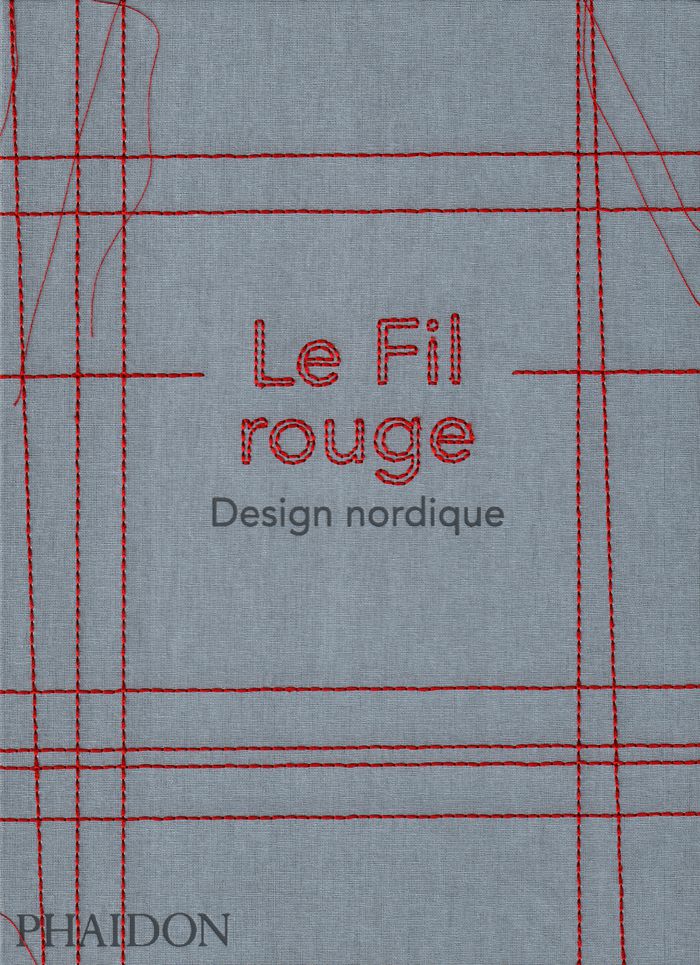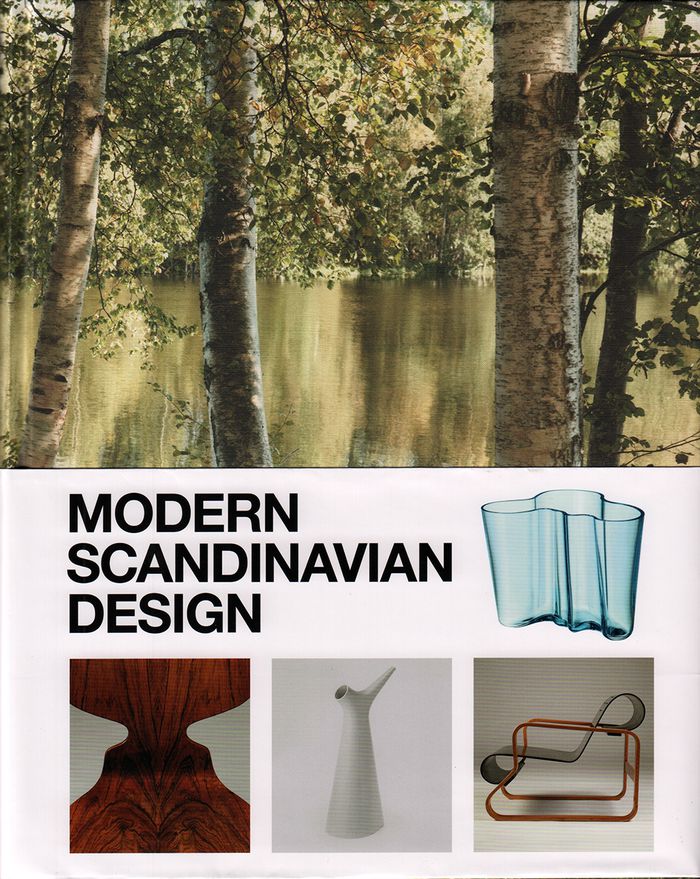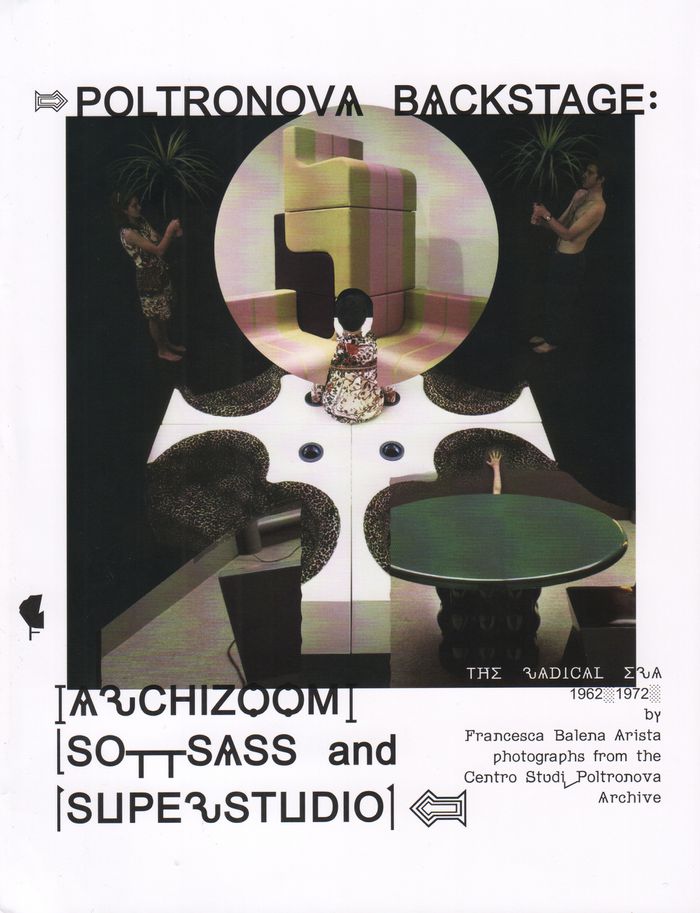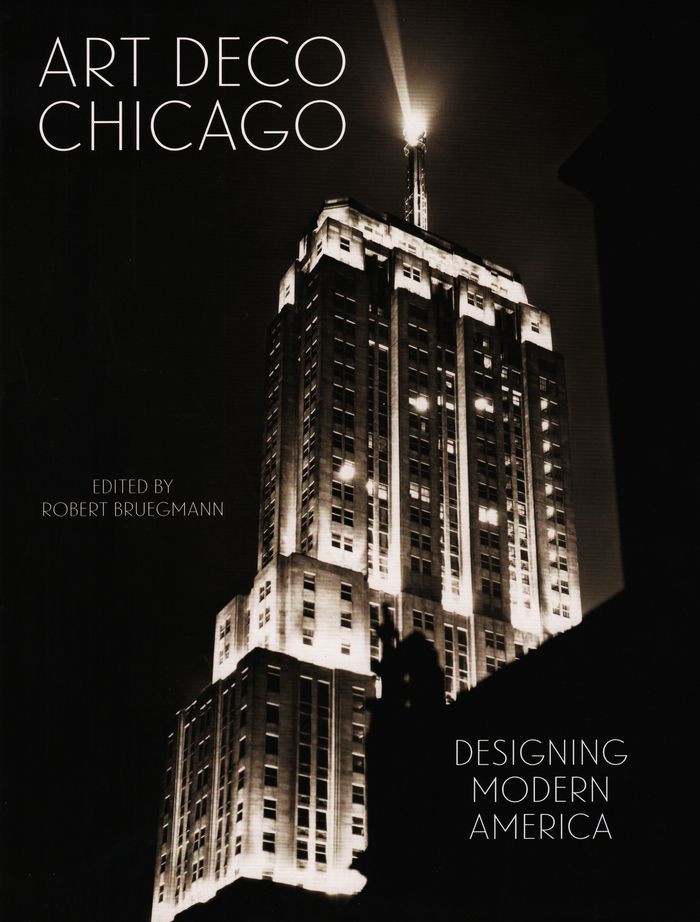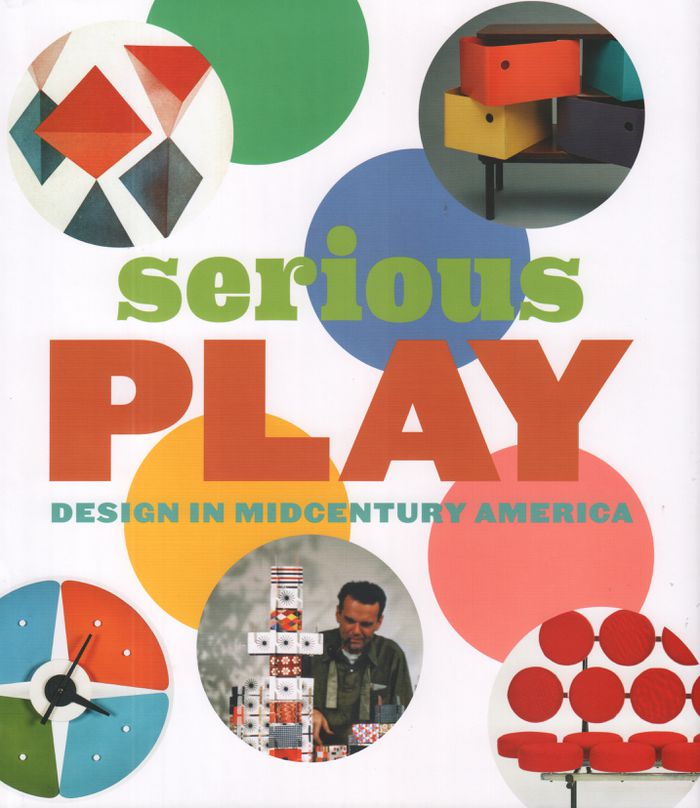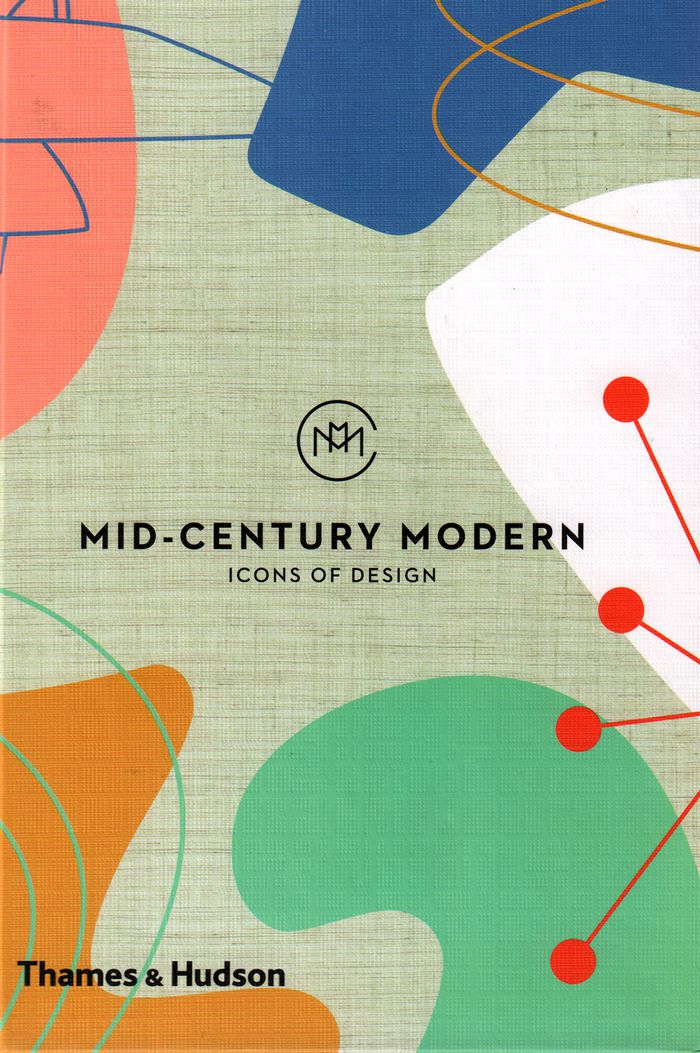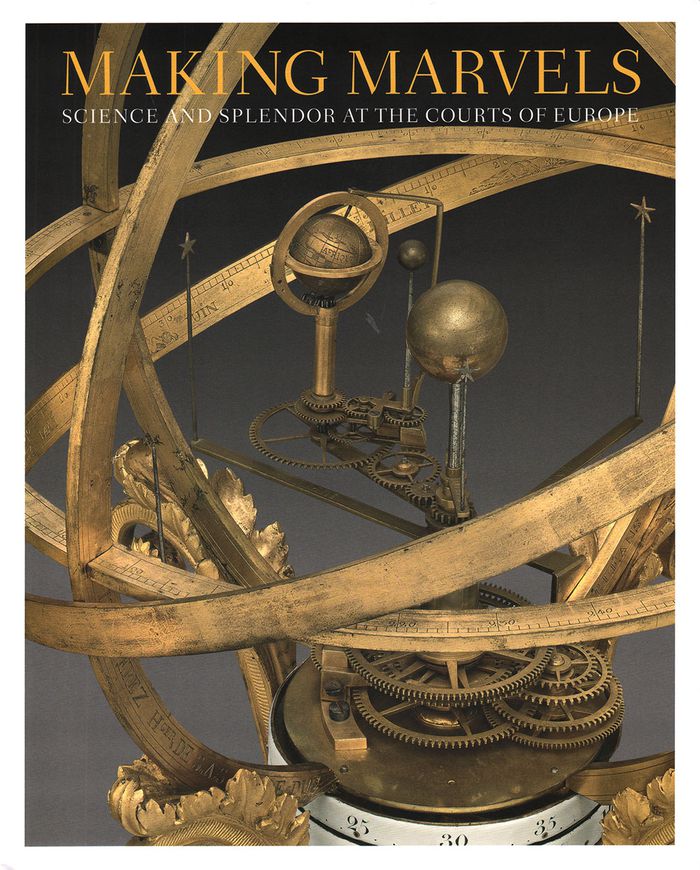$95.00
(available to order)
Summary:
Explorez la culture du design nordique, à travers les créations d'Alvar Aalto, Josef Frank, Grete Jalk, Peter Opsvik, Hans Wegner et bien d'autres. Il existe un fil conducteur qui lie les différentes langues, histoires et cultures des pays nordiques, un "fil rouge" qui constitue à la fois une philosophie de vie et une sensibilité esthétique. Le Fil rouge met à l'honneur(...)
Le fil rouge : design nordique
Actions:
Price:
$95.00
(available to order)
Summary:
Explorez la culture du design nordique, à travers les créations d'Alvar Aalto, Josef Frank, Grete Jalk, Peter Opsvik, Hans Wegner et bien d'autres. Il existe un fil conducteur qui lie les différentes langues, histoires et cultures des pays nordiques, un "fil rouge" qui constitue à la fois une philosophie de vie et une sensibilité esthétique. Le Fil rouge met à l'honneur la diversité du design nordique et rassemble plus de 200 objets du quotidien, créations de designers, pièces artisanales traditionnelles et classiques contemporains conçus au Danemark, en Norvège, en Suède et en Finlande.
Design, Periods and Styles
Modern Scandinavian design
$125.00
(available to order)
Summary:
Designers from Denmark, Sweden, Finland, Norway and Iceland have long pursued the shared goal of social equality through design, believing that well-designed everyday goods not only enhance daily life, but should also be the birthright of all. Modern Scandinavian Design is the ultimate guide to the distinctive design tradition arising out of these five Nordic countries(...)
Design, Periods and Styles
October 2017
Modern Scandinavian design
Actions:
Price:
$125.00
(available to order)
Summary:
Designers from Denmark, Sweden, Finland, Norway and Iceland have long pursued the shared goal of social equality through design, believing that well-designed everyday goods not only enhance daily life, but should also be the birthright of all. Modern Scandinavian Design is the ultimate guide to the distinctive design tradition arising out of these five Nordic countries since 1925. Bestselling design authors Charlotte and Peter Fiell have extensively researched all aspects of the aesthetic, along with contributions from Magnus Englund of Skandium. With sections on architecture, furniture, lighting, glass, ceramics, metalwork, woodenware, plastics, textiles, jewellery and graphic design, this will be an indispensable resource for any design enthusiast, collector or casual reader seeking inspiration for their home.
Design, Periods and Styles
$49.95
(available in store)
Summary:
"Poltronova Backstage", curated by Francesca Balena Arista explores the history of the Italian furniture company Poltronova. It is a snapshot of the radical years between 1962and 1972, seen through the work of Archizoom, Ettore Sottsass, and Superstudio. A unique view into a moment in design history seen through the documents and photographs safeguarded at the Centro(...)
Poltronova backstage: Archizoom, Sottsass and Superstudio
Actions:
Price:
$49.95
(available in store)
Summary:
"Poltronova Backstage", curated by Francesca Balena Arista explores the history of the Italian furniture company Poltronova. It is a snapshot of the radical years between 1962and 1972, seen through the work of Archizoom, Ettore Sottsass, and Superstudio. A unique view into a moment in design history seen through the documents and photographs safeguarded at the Centro Studi Poltronova.
Design, Periods and Styles
UAM Les modernes à l'épreuve
$32.95
(available to order)
Summary:
Métal contre bois, industrie contre artisanat, équipement contre décoration, peuple contre élite. La création de l'Union des artistes modernes (UAM), en 1929, par René Herbst, Francis Jourdain, Robert Mallet-Stevens, Hélène Henry et Raymond Templier, est souvent présentée comme une scission des "modernes" contre les "anciens", réunis au sein de la Société des artistes(...)
UAM Les modernes à l'épreuve
Actions:
Price:
$32.95
(available to order)
Summary:
Métal contre bois, industrie contre artisanat, équipement contre décoration, peuple contre élite. La création de l'Union des artistes modernes (UAM), en 1929, par René Herbst, Francis Jourdain, Robert Mallet-Stevens, Hélène Henry et Raymond Templier, est souvent présentée comme une scission des "modernes" contre les "anciens", réunis au sein de la Société des artistes décorateurs (Sad). Ces modernes, auxquels se joindront Pierre Chareau, Eileen Gray, Le Corbusier, les frères Martel, Charlotte Perriand, Jean Prouvé et bien d'autres, militent pour un art fonctionnaliste, sans ornement, destiné au plus grand nombre. Ils auraient tourné le dos aux Décorateurs et à l'artisanat de luxe, incarné par l'Exposition internationale des arts décoratifs et industriels modernes de 1925, pour créer un mouvement en phase avec les besoins de leur époque.
Design, Periods and Styles
Art Deco Chicago
$98.00
(available to order)
Summary:
An expansive take on American Art Deco that explores Chicago's pivotal role in developing the architecture, graphic design, and product design that came to define middle-class style in the twentieth century.
Art Deco Chicago
Actions:
Price:
$98.00
(available to order)
Summary:
An expansive take on American Art Deco that explores Chicago's pivotal role in developing the architecture, graphic design, and product design that came to define middle-class style in the twentieth century.
Design, Periods and Styles
Serious play
$65.95
(available to order)
Summary:
This volume shows how postwar designers embraced whimsy and eclecticism in their work, exploring playfulness as an essential construct of modernity. Following World War II, Americans began accumulating more and more goods, spurring a transformation in the field of interior decoration. Storage walls became ubiquitous, often serving as a home's centerpiece. Designers such(...)
Serious play
Actions:
Price:
$65.95
(available to order)
Summary:
This volume shows how postwar designers embraced whimsy and eclecticism in their work, exploring playfulness as an essential construct of modernity. Following World War II, Americans began accumulating more and more goods, spurring a transformation in the field of interior decoration. Storage walls became ubiquitous, often serving as a home's centerpiece. Designers such as Alexander Girard encouraged homeowners to populate their new shelving units with folk art, as well as unconventional and modern objects, to produce innovative and unexpected juxtapositions within modern architectural settings. Playfulness can be seen in the colorful, child-sized furniture by Charles and Ray Eames, who also produced toys. And in the postwar corporate world, the concept of play is manifested in the influential advertising work of Paul Rand.
Design, Periods and Styles
Essential Modernism
$120.00
(available to order)
Summary:
This wide-ranging survey showcases and analyzes the work of dozens of Modernist designers, from those who established the International Style in the 1920s and ‘30s through the groundbreaking practitioners of the mid-1940s. Modernism, with its powerful aesthetic and compelling philosophical framework, is the twentieth century’s most defining movement in design and the(...)
Essential Modernism
Actions:
Price:
$120.00
(available to order)
Summary:
This wide-ranging survey showcases and analyzes the work of dozens of Modernist designers, from those who established the International Style in the 1920s and ‘30s through the groundbreaking practitioners of the mid-1940s. Modernism, with its powerful aesthetic and compelling philosophical framework, is the twentieth century’s most defining movement in design and the applied arts. International architects and designers such as Alvar Aalto, Marcel Breuer, Eileen Gray, Le Corbusier, Ludwig Mies van der Rohe, and Frank Lloyd Wright revolutionized the built world and how we live in it. Their work rejected historical precedents, prioritizing function over tradition, and their experimentation with new forms, materials, and techniques transformed our living spaces and lifestyles and fundamentally changed the way we think about design.
Design, Periods and Styles
$19.95
(available to order)
Summary:
Featuring more than 90 pieces by over 60 designers and design duos, ''Mid-Century Modern: Icons of Design'' is arranged chronologically, and includes chairs, tables, storage, lighting, and product and industrial designs. On each spread, an illustration of the piece is accompanied by a concise overview: an index of models, designers and manufacturers.
Mid-century modern: icons of design
Actions:
Price:
$19.95
(available to order)
Summary:
Featuring more than 90 pieces by over 60 designers and design duos, ''Mid-Century Modern: Icons of Design'' is arranged chronologically, and includes chairs, tables, storage, lighting, and product and industrial designs. On each spread, an illustration of the piece is accompanied by a concise overview: an index of models, designers and manufacturers.
Design, Periods and Styles
$86.95
(available to order)
Summary:
At once beautiful works of art and technological wonders, the objects featured in "Making Marvels" demonstrate how European royalty from the Renaissance to the Enlightenment signaled their status through their collections of ingeniously crafted inventions. Featuring 150 exemplary objects ranging from mechanical toys to scientific instruments, timepieces to automata, this(...)
Making marvels: science and splendour at the courts of Europe
Actions:
Price:
$86.95
(available to order)
Summary:
At once beautiful works of art and technological wonders, the objects featured in "Making Marvels" demonstrate how European royalty from the Renaissance to the Enlightenment signaled their status through their collections of ingeniously crafted inventions. Featuring 150 exemplary objects ranging from mechanical toys to scientific instruments, timepieces to automata, this study brings to life a glorious period when luxury, a quest for knowledge, scientific invention, and political power combined to produce remarkable works of art. More than frivolous playthings, these works inspired technical innovations that influenced a broad spectrum of activities, including astronomy, engineering, and artisanal craftsmanship.
Design, Periods and Styles
$60.00
(available to order)
Summary:
In the mid-1960s, reacting to contemporary social and political upheaval, young Italian architects and designers began developing a new style that openly challenged Modernism. Known as 'Radical design', this movement probed possibilities for visually transforming the urban environment. This publication surveys the work of these pioneering designers through nearly 70(...)
Radical: Italian design 1965-1985. The Dennis Freedman collection
Actions:
Price:
$60.00
(available to order)
Summary:
In the mid-1960s, reacting to contemporary social and political upheaval, young Italian architects and designers began developing a new style that openly challenged Modernism. Known as 'Radical design', this movement probed possibilities for visually transforming the urban environment. This publication surveys the work of these pioneering designers through nearly 70 objects and architectural models — including rare prototypes and limited-production pieces.
Design, Periods and Styles
